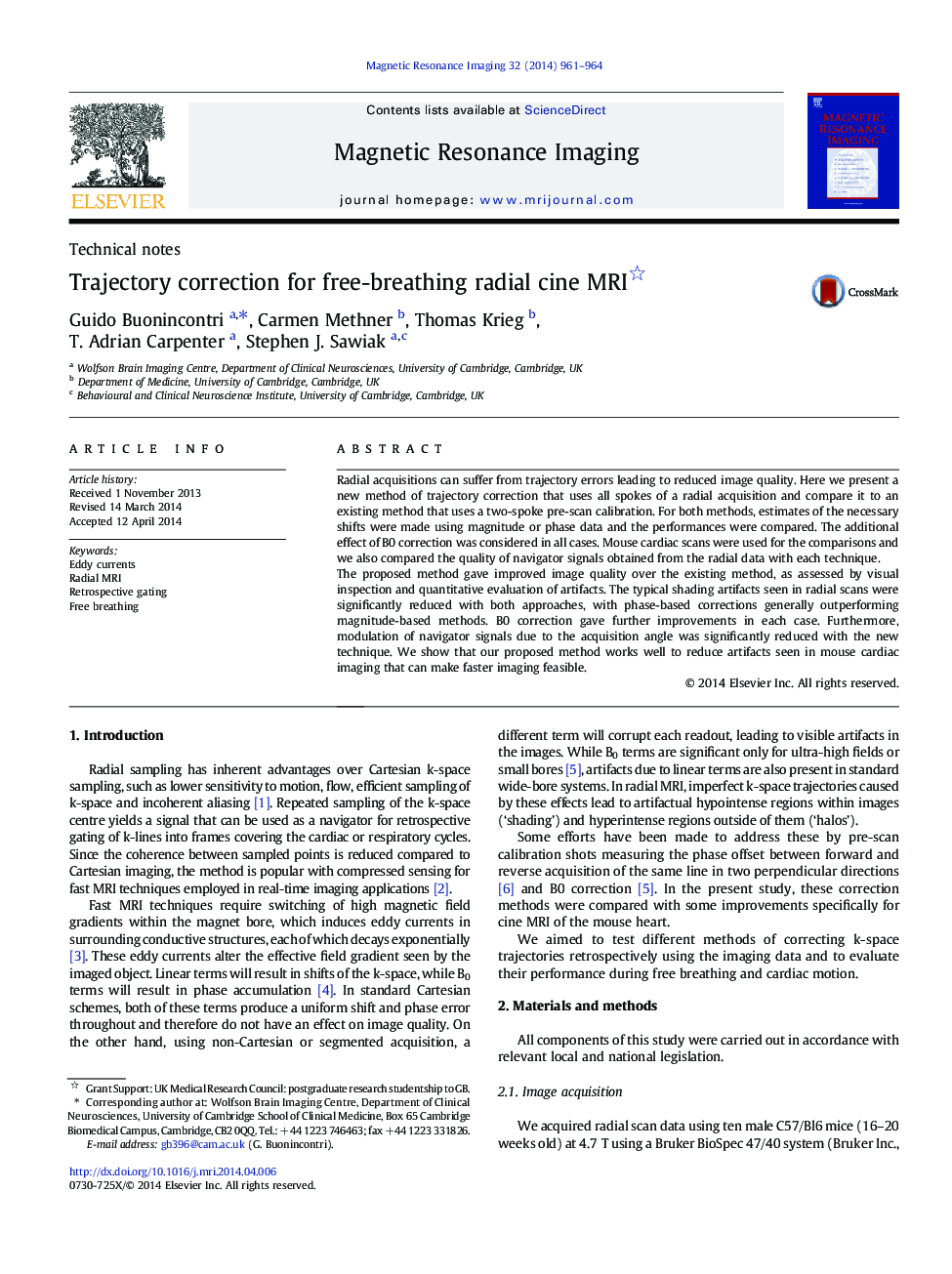| Article ID | Journal | Published Year | Pages | File Type |
|---|---|---|---|---|
| 1806428 | Magnetic Resonance Imaging | 2014 | 4 Pages |
Radial acquisitions can suffer from trajectory errors leading to reduced image quality. Here we present a new method of trajectory correction that uses all spokes of a radial acquisition and compare it to an existing method that uses a two-spoke pre-scan calibration. For both methods, estimates of the necessary shifts were made using magnitude or phase data and the performances were compared. The additional effect of B0 correction was considered in all cases. Mouse cardiac scans were used for the comparisons and we also compared the quality of navigator signals obtained from the radial data with each technique.The proposed method gave improved image quality over the existing method, as assessed by visual inspection and quantitative evaluation of artifacts. The typical shading artifacts seen in radial scans were significantly reduced with both approaches, with phase-based corrections generally outperforming magnitude-based methods. B0 correction gave further improvements in each case. Furthermore, modulation of navigator signals due to the acquisition angle was significantly reduced with the new technique. We show that our proposed method works well to reduce artifacts seen in mouse cardiac imaging that can make faster imaging feasible.
